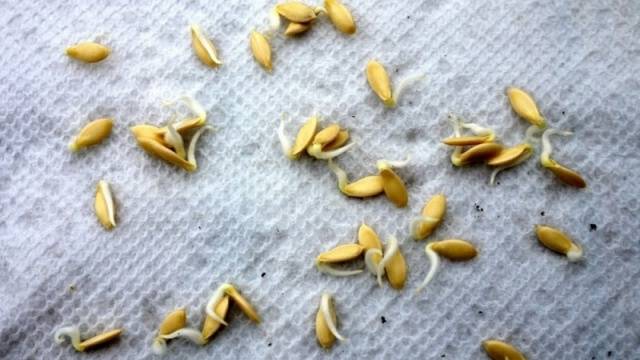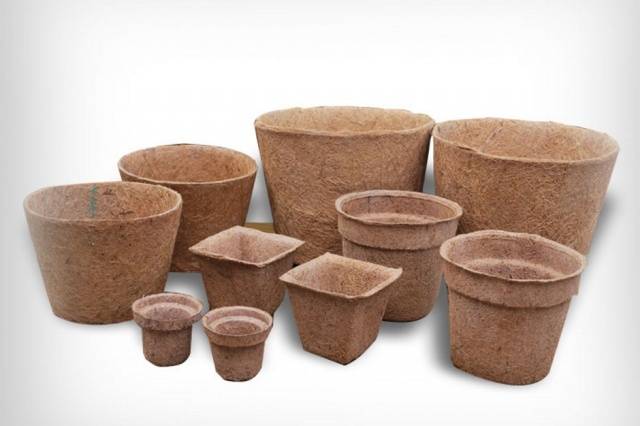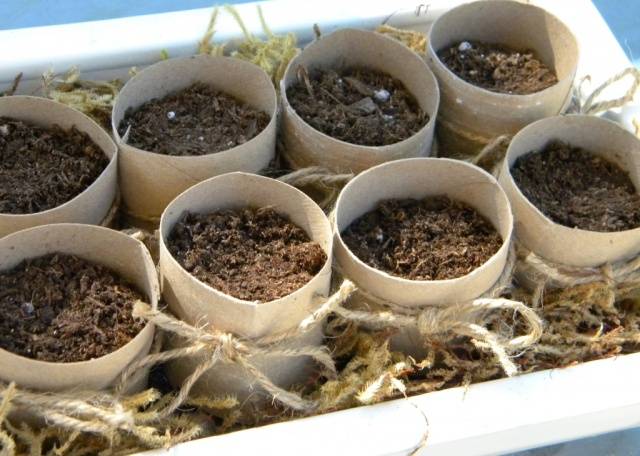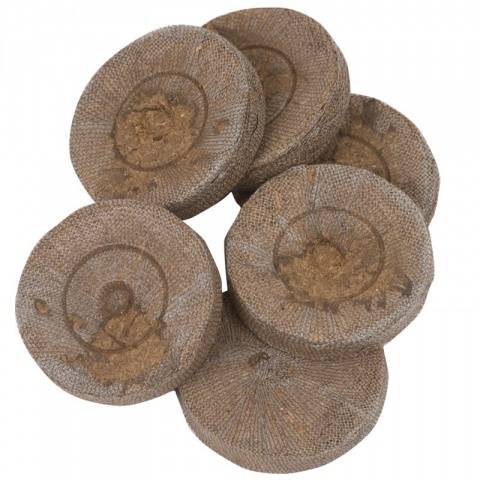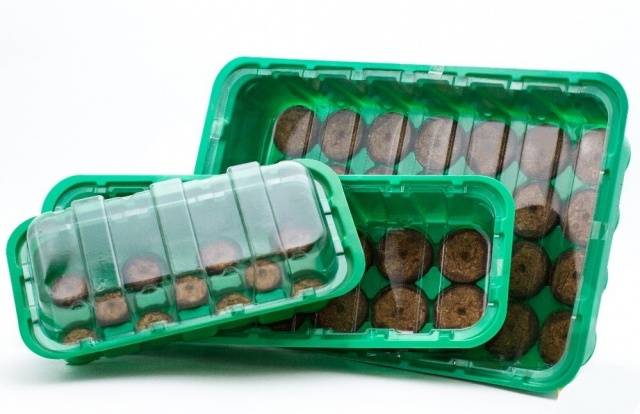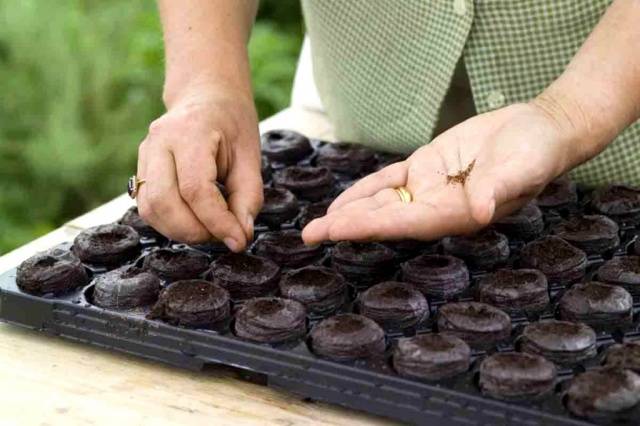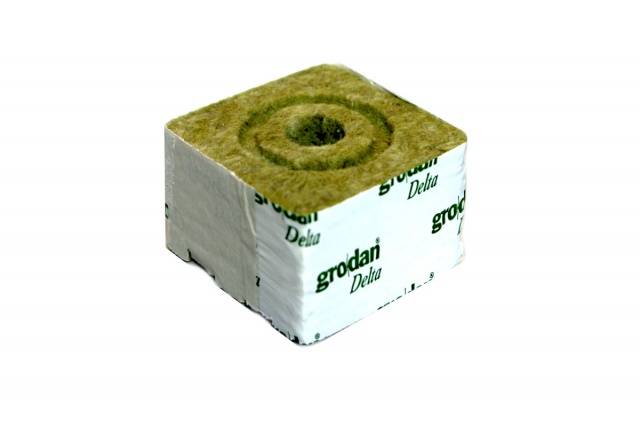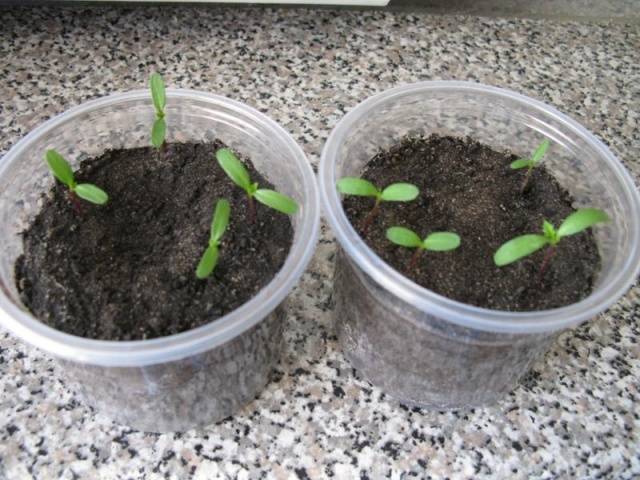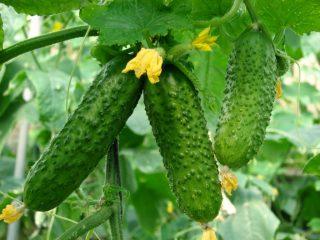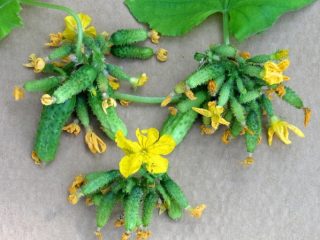Content
Winter has sung blizzard songs, huddled in a shabby sheepskin coat under the high sun. It's time to think about what cups to buy for planting seedlings for cucumbers.
Avoiding transplants during picks
Cucumber seedlings are tender. Transplants, picks delay the growth of shoots of cucumber seedlings due to trauma to the root system. But the seedling method helps to get the first cucumbers in 1-2 weeks. The way out is obvious: sow in a volumetric container and do not disturb before disembarking on the site.
Disadvantages:
- Monthly plants take up as much space as seedlings before planting;
Pros:
- Germinated seeds give 100% germination;
- The soil for planting seedlings is scalded with boiling water, no one will encroach on the tender roots;
- Weak plants are rejected on the day of planting;
- Remains a heel of spare plants for an emergency.
Peat cups
Peat cups began to be produced in the 80s of the last century. The idea is good: the roots will be kept intact, the fertilizer is side by side during the growth. Peat pots do not collapse when wet, retain their shape until planting. Manufacturers claim that antiseptic treatment has been carried out against insemination weeds and pests. And that the composition is chemically harmless.
There is a constant lack of space for seedlings of cucumbers. If you purchase sets of different-sized cups, then a gradual transplant into a larger pot will partially help to find a place on the windowsill before transferring to the balcony for hardening the seedlings. Acquisition costs will rise, but fighting for the sun from the window is worth it. Final cup size for 30 days cultivation Ø 11 cm.
Gardeners complain that peat cups are substituted for recycled cardboard products. Differences are difficult to determine by eye.
Manifestations of falsification:
- Oppression of cucumber seedlings;
- Inability to break through the roots after disembarkation;
- The remains of the cups do not decompose in the ground.
Difficulties arise with the observance of the humidity regime. The walls of the glass are added to the evaporation area, the soil dries out, excess moisture leads to the appearance of mold. The optimal solution is to add soil, sawdust or other filler around the conical cups to prevent evaporation. Soil drying problems will disappear.
Even in a permeable peat pot, it is desirable to perforate the bottom. When transplanting into a larger glass or into the soil, it is recommended to cut off the bottom, cut the side walls to the full length in 4 places, or remove if in doubt about the quality of the pot material.
Favorable conditions for the early development of cucumber seedlings in peat cups are created in cassettes of mini-greenhouses: the humidity regime is unchanged, controlled by the amount of evaporation on a transparent hood. Cool air does not cool the sprouts. In addition to the pots, you will have to take care of the substrate.
Peat tablets - ready-made substrate for seedlings
The convenience of using peat tablets has already been appreciated by gardeners who independently grow cucumber seedlings. A fivefold increase in the volume of the substrate creates ideal conditions for seed growth:
- Air permeability due to the porous structure of peat;
- The roots grow in a loose environment;
- Low probability of overdrying the root system;
- The substrate until the end of the growing season of the plant serves as a fertilizer;
- Planting in a greenhouse takes place with an intact root system.
Peat tablets - ready-made nutrient substrate for growing cucumber seedlings in a plastic cup or pot with a volume of 0.7-0.9 liters. The tablet is designed for 20-30 days of autonomous growth. High-moor peat is enriched with microelements and growth stimulant. The compact peat disc swells after watering for 15 minutes. The mesh over the peat pellet retains the unchanged shape of the substrate.
Peat tablets 8x3 cm in size are optimal for growing cucumbers. The hole at the top is for planting the seed.
The percentage of germination of non-germinated seeds in a peat tablet is higher than in soil. Seed germination is accelerated due to the aeration of the substrate. Controlling the moisture regime of peat is easier than that of ordinary soil. Growing cucumber seedlings in deep trays with backfill around peat pellets of soil or sawdust creates the best conditions for cucumbers.
The method of growing cucumber seedlings on peat tablets
The rave reviews for peat tablets are warranted. Plants on germination and during the growing season develop dynamically on a natural substrate. The peat ball serves as a top dressing for the root system of cucumbers even after planting in open ground.
When growing a large number of cucumber seedlings, it is convenient to use special plastic cassette pallets. Peat tablets are placed in cells, filled with warm water. Excess water is removed. One germinated cucumber seed is placed in the holes of the tablets, sprinkled with soil. Dry seeds are planted in pairs, the weak seedling is subsequently removed so that the plants do not oppress each other.
The pallet is covered with a transparent cover to create a greenhouse microclimate. When cucumber shoots appear, the pallets are exposed to the light, and the seedlings are regularly aired. When the plants get stronger, the leaves reach the lid, the cap is removed. Watering cucumber seedlings after that it is carried out regularly.
We plant cucumbers in peat tablets:
How are cucumbers in peat tablets doing?
Plastic containers for cucumber seedlings
Plastic containers for cucumber seedlings with peat-based soil have been used for many years. It is preferable to purchase multi-compartment containers with rectangular cells that have a tapered taper towards the base. Inconvenience is created when using more than two cells wide:
- Seedlings of cucumbers on the inner cells will receive less light;
- Before planting in the ground, crowded cucumbers will interfere with the growth of neighbors;
- It will be inconvenient when removing plants from the container;
- Transportation and off-season storage of narrow containers is simplified.
Using mineral wool cubes
A promising method of growing cucumber seedlings on an artificial substrate is gaining popularity hydroponics using drip irrigation of plants. Chemically inert mineral wool with zero toxicity is used as a substrate. The choice of substrate material is due to the following properties of mineral wool:
- There is no chemical interaction of the nutrient solution with the substrate due to the chemical neutrality and sterility of the material;
- The stability of the retention of the shape and volume of the material allows the use of mineral wool cubes for several years. The root system is released from the substrate without injury;
- Availability of control over the development of the root system;
- Uniformity of shoots and growth of cucumber seedlings;
- Affordability of low volume hydroponics.
The impossibility of contamination of the substrate with soil pathogens, the knowledge of chemically inert material makes mineral wool an ideal substrate for low-volume hydroponics in obtaining consistently high yields of cucumbers in summer cottages and farms.
The hygroscopicity of mineral wool makes it possible to manage with a small volume of substrate and solution (no more than 3.5–4 liters per plant). Low-power drip irrigation installations are able to provide the required amount of nutrient solution for both seedlings and fruit-bearing cucumber plantations, on chemically neutral mineral wool when forcing seedlings and cultivating in a greenhouse.
For the root system of cucumber seedlings and fruiting plants, the conditions for development and nutrition in an artificial substrate are optimal. It is important not to be mistaken when choosing a nutrient solution manufacturer. The early maturity, vitality of cucumber seedlings are completely subject to the strategy of irrigation and development of the root system.
Rooting of cucumber seedlings grown on an artificial substrate into the ground is painless enough. The root system of cucumber seedlings is actively developing if work has been carried out in the greenhouse to create an optimal microclimate, the soil is prepared for drip irrigation, and is fertilized with air permeability.
Seedling cups from scrap material
Traditionally, our gardeners accumulate food packaging during the winter, which are used as seedling cups. Tare containers are quite acceptable for forcing cucumber seedlings: the materials are chemically neutral, do not decompose, and have a margin of safety.
The prevailing advantage of such seedling cups is zero cost. Stability and volume are in second place. Laminated rectangular bags for dairy products are convenient. Ogorodnikov are attracted by stability, the absence of boundary voids, as is the case with round cups, the possibility of filling with a large volume of soil.
It should not be overlooked that in a small volume of soil, cucumber seedlings are inhibited in development before planting. The root system of such plants is insufficiently developed and the first time after planting in the ground, the seedlings will not receive enough nutrients through the roots. The vegetation of the plant will slow down until the roots grow.
It is possible to replace laminated milk bags for growing cucumbers using plastic bags up to 1 liter in volume. The corners of the bag are connected in the center of the bottom with a paper clip or tape. This ensures the formation of an almost regular rectangle after filling with soil.
Ideas for self-production of decaying cups from newspapers and other paper printed materials are time consuming and unpromising. In addition to the accumulation of lead in the soil and plants, we get moldy containers, which, after excessive watering, can fall apart.
Seedling cups made of polyethylene tapes:
Brief summary
How many gardeners - so many opinions about the convenience of cups for growing cucumbers of a certain type. The shape of the cups, the material is secondary. Ease of maintenance, how much space on the windowsill, the internal volume and quality of the substrate - these are the criteria that determine the choice of the gardener.
The harvest of cucumbers is laid in cups on the windowsill. Mistakes and successes will appear within a week after planting the plants in the ground. We listen carefully to the advice of experts. And we do, as our own experience of growing cucumbers suggests.
